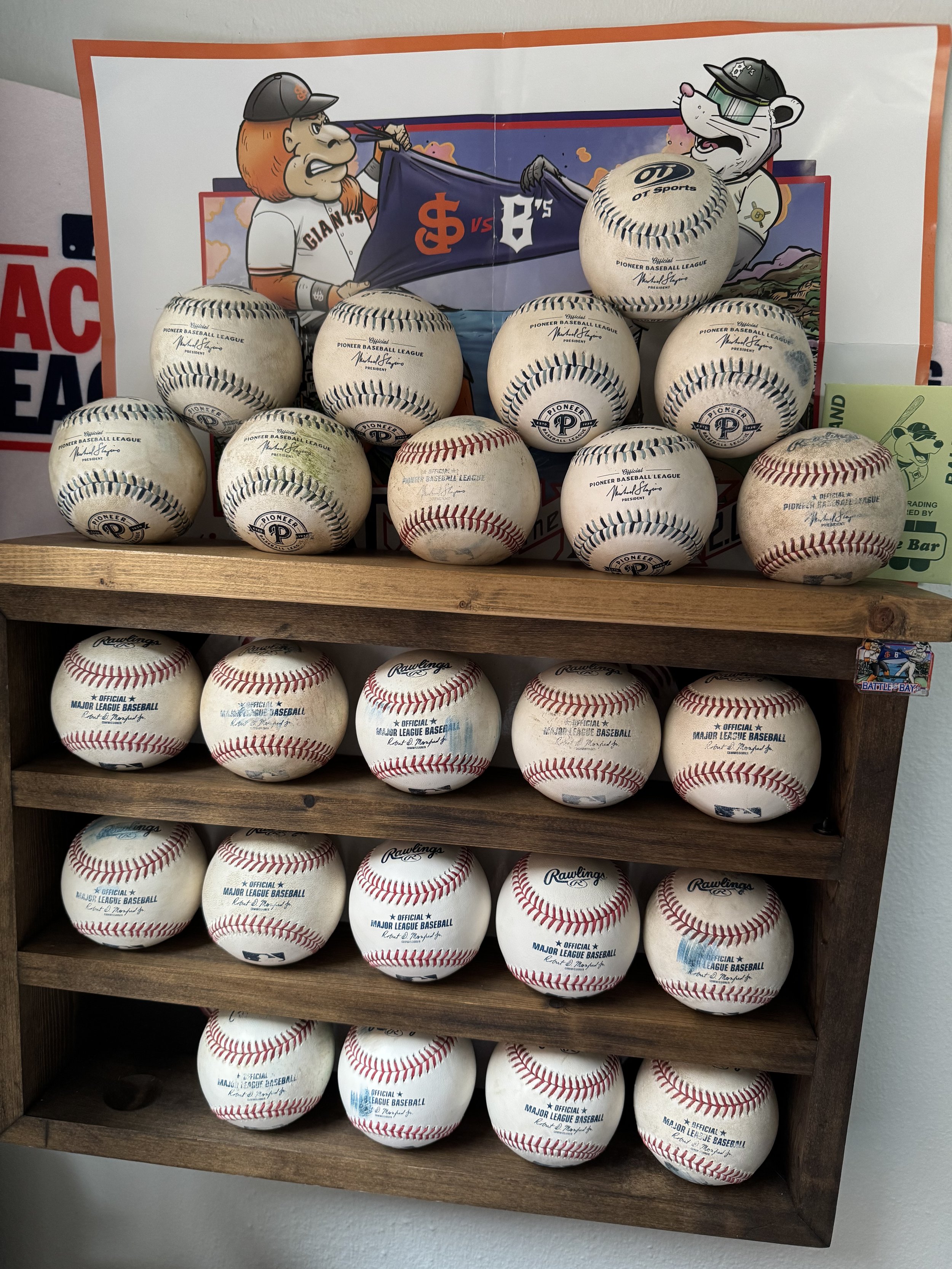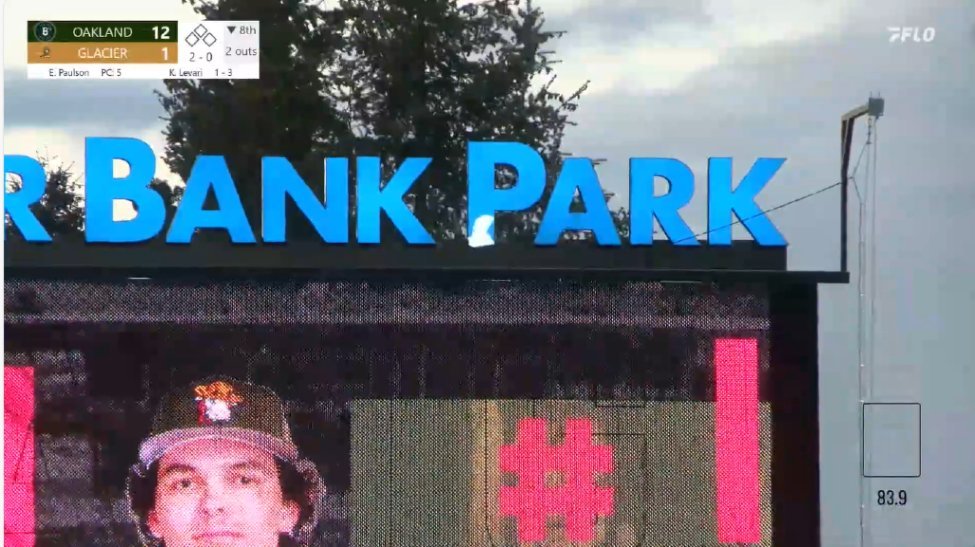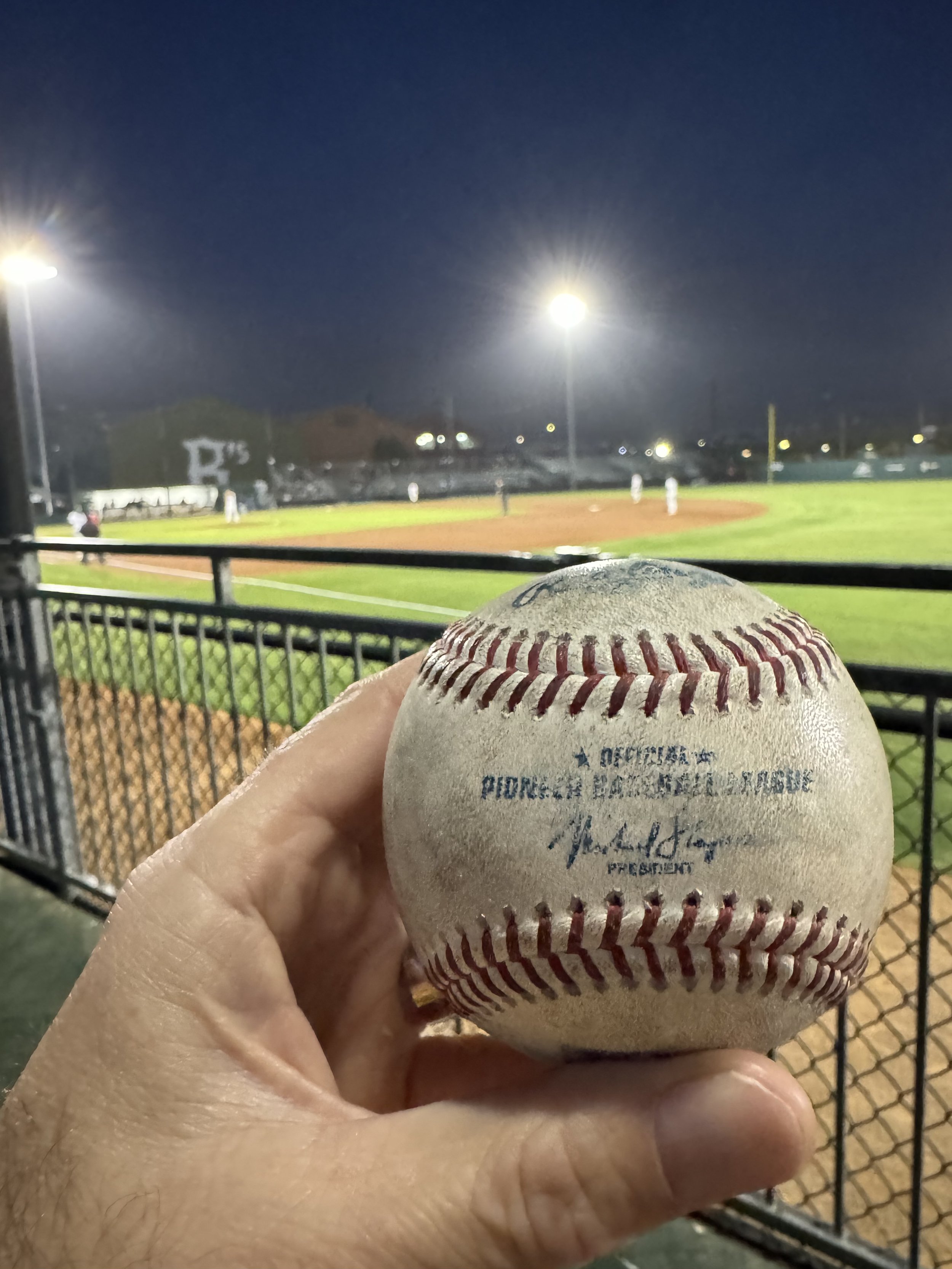How to Catch a Foul Ball
So you wanna catch a Ballers’ foul ball?
Glad you asked! I’m just a little obsessed. Not quite this guy, but, you know, I have a problem. But if one step to recovery is acceptance, surely the next is sharing everything you know to give everyone else that problem too.
Generally
Bring a glove. You know, that leather bighand the players wear? Not everyone can make a barehanded catch like Kevin Mitchell.
Watch the game. Chance favors the prepared mind, and you also avoid being brained like these people.
Right handed, left handed. Right handed batters mostly foul opposite where they’re standing, toward the first base line. Lefties go down the third base line. If a batter does foul down his own side, it’s usually a pull shot that heads much farther down the line into the outfield. If you want to take your hunt up a level, and/or don’t want to chase balls all over the park, look up the lineups ahead of time to see whether you’ll have more righties or lefties before deciding where to sit—and not just the lineup for your own team, of course. Real foul ball hawks don’t care where the balls come from.
Watch the net. For ages, baseball fans took their lives in their hands sitting with no or very little protective netting. The change is a good thing. But if you’re ball-hunting, it’s not necessarily your friend. In some parks, check where the netting is slightly pulled back or loose, often around the dugouts or a field entrance, as players, coaches, and staff often use them to sneak a corralled ball through to waiting fans.
Sit on the aisle. Real pros know that you maximize your range and reaction by sitting on the aisle where you can cover the most ground, ideally with some empty seats on either side. What if someone in your group isn’t as dedicated as you are?
At Raimondi
In my entirely unscientific but really excellent and always correct advice, the best spots within Raimondi are
Bleacher reserved F and General Admission 1, midway (row 13) and up the stand.
Standing in line at main concessions and merch at the front entrance to Raimondi! Don’t get sucked into your phone waiting in the queue. Keep your eyes to the sky, praying-slash-looking for the loopers that drop regularly onto the concrete and come to rest in the grass or to the fence.
If you’re a kid: sit in the first rows in GA 2 way down the line past the net, so when fouls travel into the outfield, your fielder (hi Esai! hi Pat! hi Lou! hi Davis! hi Michael!) can toss it to you easily.
How bad do you want it? The Raimondi multi-use field immediately behind the grandstand and beyond the fencing gets fed foul balls every.single.game. If you really want to bring one home, start your day or end it with a couple of innings waiting in the field. You can also try your luck bolting from the game when you see one—stand at the top level of the first base bleachers to track it from height, then go—especially if it’s around the time you were going to leave anyway. There’s no re-entry, of course, so strategize. Also! Make friends with the people playing on Raimondi’s other fields. Several times I’ve seen kids and adults toss balls back to fans who caught their eye and asked nicely (and you may find yourself returning the favor with an errant soccer ball at some point).
Warehouse Row Plenty of balls get fouled off against the warehouses along 20th (and, alas, sometimes strike the cars along there too—not a suggested parking area, along with non-netted Campbell). You can wait out here too, or have a slow mosey before an entrance or after an exit—it might be an inning or two, but they are coming!—or you can search the walkways to the VIP parking at the corners of Willow and Campbell. In particular, balls that hit two of the sloping roofs gather in a thin accessible stretch about four car lengths up from the Willow corner. Kids and the suspiciously flexible: make sure to check along the curbs on 20th, both sides, and even gently on the inside of parked car tires. Balls regularly come to rest here, and your keen eyes will also save the driver from running them over when they leave.
Third Base, Sad Base The third base bleachers have an amazing view, some of the best fans, close concessions and bathrooms, beautiful sunset light and proximity to the action, but they aren’t good for baseballs. Many of the fouls here end up in the street behind you. Sometimes, and I have personally been on both sides of this exchange, you can get kindly passersby to throw you a ball back into the stands, but that’s about all you’ve got.
At Raimondi, the foul ball’s nemeses are the gaps in the bleachers. Many a child and childish adult has let out the mournful wail of being ever-so-close before a ball drops into the abyss below. Be fast! And, if it isn’t too much trouble, ask everyone in your row to put their heels together and form a wall of intense seated pliés so that no ball is lost. (Kidding. But not really.) Don’t ever go under the bleachers chasing a ball!
From the Real Ballers!
Enough of my nonsense, though. Let’s go to the experts. I asked our Ballers for some advice on catching a pop fly, and here’s what they said. (And a still or swivel head? You decide.)
Darryl Buggs: I’d say the biggest thing is to keep your head on a swivel. Most of the foul balls that come in the stands are most likely going to be high in the air and the ball will probably end up not being where you think it’ll be when it lands because of the spin the ball will have.
Esai Santos: I’d say its beneficial to have a glove to give you more confidence. Also maybe sit in the middle rows, not only because sometimes the balls that land in the top rows bounce down but because you might have an easier time getting a ball thrown to you from one of the players after the inning is over.
Davis Drewek: The key is to keep your head as still as possible and just hope it goes in the glove. Trust your instincts.
Christian Almanza: Keep your head on a swivel and make sure you see it into your hand/glove! The wind at Raimondi always brings the ball back into play.
Etiquette, or, Extraordinary Effort
The age-old tricky question: should you give a foul ball to a kid? The short answer is yes. However, since I’m deranged, I’ll qualify: if you make the catch in the air, snatch an incredible carom, gobble up a grab while holding a drink or a child, that level of difficulty surely entitles you to keep the ball. If it bounces to you, dribbles down 10 rows, or—heavens forbid—you clamber over little bodies to catch it skittering on the ground…give it up. In baseball, the term “ordinary effort” is officially and subjectively used to determine errors, infield flies, and sacrifices. So, if you made an ordinary effort to get the ball, sacrifice it to a kid. Extraordinary? Well…that’s a judgment call. (Oh, and having a kid of your own? At last, the unlimited foul ball excuse I’ve—sorry, you’ve—been looking for.)
Non-Competitive Balls
Your other option, of course, is the Non-Competitive Ball. These are those given to fans (usually kids) or tossed into the stands after an out or at the end of the inning. At Raimondi, your best shot is to sit behind the Ballers dugout, and as Esai said, about halfway up the stands. Remember that the players have to loop their throw over the net, so they are typically aiming for that middle sweet spot. They are also looking for people already looking at them, so be up and ready after that last out!
Generally, opposing teams do not throw balls into the stands after catch in the outfield or after making an out. There are exceptions, of course, but the home team is always a stronger bet.
Home Runs
With Raimondi’s setup, most right-handed dingers are hit into the outfield netting and drop into the narrow alley between the chain fence along Campbell and the outfield wall. Lefties usually land in the bullpens. No fans, of course, allowed in those spots. Occasionally, a big bomb will clear the netting and land on Campbell, but keep a close eye: I’ve seen several get caught in the ivy on the walls of Telegraph Estate or Supreme Glass. It’s worth a check; just be careful and kind to the plants and their businesses.
One sneaky spot: on either side of the scoreboard, there must be something in the slope of the earth or the magnetism of the soil that brings balls near. If a homer is hit anywhere close to the big board during the game, give the gravitational pull of those pylons a quick peek on your way home. (And at least Davis Drewek is breaking boards and signs in other people’s parks.)
Is that enough? My next book, All Foul is Fair, is out next month from Cool Ranch Doritos Publishing. I remember fondly those decades of going to baseball when I cared not for our spherical friends. Then, one day, a ball quite literally bounced to me, in an empty Coliseum concourse on a chilly May night in 2021. It was all over after that. Though I’ll never be as good as this guy, a word of warning, friends: like all great obsessions, once you start in, you may never (want to) come out.
I don’t know what I love about a game ball so much. I was never an athlete, and this is about as close as I’ll ever come to the action. It makes me feel a part of the game in a way nothing else does. I’m attentive, excited, and just a little bit scared that I’ll miss the moment when my time comes. It’s random, but you can help your odds. It makes instant community: cheering a stranger who made a great play, someone giving a ball to someone else. No other game lets you so consistently have and share a little piece of it. To take home that little piece and have it forever is also as close as I’ll get to the real nostalgia that fills you up rather than leaves you empty. When it’s winter I can see the summer, when the team loses I remember that they’ll win again. That’s life, I guess.




